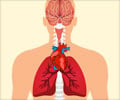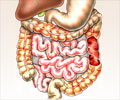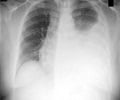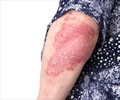A special report on world TB day . India’s fight against TB is gaining momentum with DOTS.
24th March 2008
World TB day is celebrated each year to commemorate the day, in 1882, when Robert Koch discovered M.tuberculosis, the TB bacterium. The symptoms of tuberculosis are coughing sputum or blood, chest pains, weakness, weight loss, fever and night sweats. The theme this year is ‘I am stopping TB’.Top five Breath-Stopping Facts about Tuberculosis
Did you know-
• That someone in the world is newly infected with TB bacilli every second?
• That one-third of the world population is currently infected by TB?
• That there are two deaths per three minutes in India due to TB?
• That over six lakh Indians are unaware that they suffer from TB?
• That every TB patient infects 10-15 new persons on an average every year?
These are worrying facts brought out by the World Health Organization’s latest global tuberculosis control report, which warns that detection rates of TB are drastically falling in India and in China.
The findings are worrying, because the report reveals that ’the African region, China and India collectively account for 69% of undetected cases’. This high prevalence depletes the income of the poorest communities by 1.2 billion annually. India is one among the high burden countries in terms of TB patients
With a failed attempt from 1968 to 1993 with the National TB Control(NTBC) Programme, India had switched over to the Revised National TB Control(RNTBC) Programme, which concentrates on the personal attention of the health staff on each TB patient. Thus, India hopes to cut down TB prevalence and death rate by half, by the year 2015.
Tuberculosis, caused by Mycobacterium tuberculosis and easily transmitted through air, has been India’s bane right from the days of the Vedas and Samhitas.
Dr Frimodt Moller a medical superintendent, played a prominent role in TB control in India. This included training health workers, conducting surveys and introducing Bacillus Calmette Guerin (BCG) vaccination.
The British also helped with the funding and establishment of the TB Association of India (TAI) in February, 1939. India then, which included Bangladesh and Pakistan, had around two and a half million patients and half a million TB deaths annually, according to a committee appointed at that time.
Diagnosis was an issue, and there were lack of X-ray machines to zero in on TB patients. There was no single drug that was particularly effective against TB, till mid 20th century. The remedy was said to be good food, open air and dry climate.
Fighting Tuberculosis
Post World War II, India began an effort to fight TB with greater determination. It launched a mass BCG Campaign in 1951. There also began experiments into effective dosages.
In 1952, it was found that INH is a miracle drug against TB and it continues as such till date. The other anti-TB drugs used as of now are
• Isoniazid,
• Rifampicin,
• Pyrazinamide,
• Streptomycin, and
• Ethambutol
The present RNTBC is in place from 1997 onwards. This was after a review of the NTBC programme from 1968 by the Government of India, WHO and Swedish International Development Agency (SIDA).
They found the programme to be marred with managerial weakness, inadequate funding, over-reliance on x-ray, non-standard treatment regimens and lack of information on treatment outcomes.
Another hurdle was that only 30 per cent of the community took the treatment, and only 30 per cent of those who took the treatment continued it to completion. The programme was then replaced by the RNTCP and thus the Directly Observed Treatment Short Course (DOTS) was designed.
By March 2006, the RNTBC had reached out to 633 districts with its DOTS programme. Its second phase began in the year 2005 and is a step forward to meeting the UN’s TB-related Millennium Development Goals.
Under the programme, about 12,000 quality assured Designated Microscopy Centres (DMC) to provide sputum testing services, with each DMC covering a population of 1,00,000 (50,000 in tribal and remote areas) have been established.
Under DOTS, after a person is found positive for TB in the sputum smear test using microscopy, a full course of the correct dosage of anti-TB medicines is given under the direct surveillance of trained health workers.
The entire course, lasting for six to eight months, is packaged in a ‘patient wise box’ that makes the treatment easier, uninterrupted and trustworthy.
The patients resistant to medicines are put through a longer-duration course (one to one and a half years) called DOTS+. Review occurs every month, when the patient is given the medicine in front of the health worker. This is to avoid the low rate of treatment completion that marred the previous programes.
DOTS is available in the government health centres and is also extended through voluntary organizations. A committed approach to tackling TB along with perseverance in spreading awareness will see the India, and other affected countries, well on the road to recovery.
Source-Medindia
T.N.Gopalan/K











